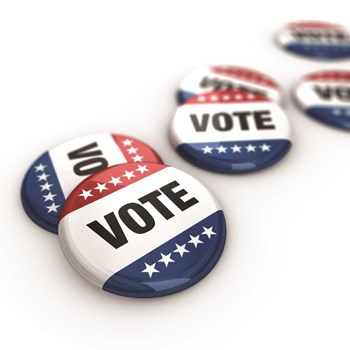
Freelance photographer Jocelyn A. lives in a charming, post-war brick townhouse community of over 1,600 units and a $3 million annual budget. She receives a monthly newsletter with over 20 pages of everything to keep residents informed, but says, “Sometimes I don’t even open it… what with my travel schedule and work commitments.”
Jocelyn admits that she seldom attends an annual meeting or election, although she has occasionally sent in a proxy vote. “I always have the intent to participate,” she insists, “but because of my other commitments, I’m really kind of disengaged.” When she has attended a monthly board meeting, or the annual meeting, she was disappointed—the atmosphere didn’t feel inclusive. “It was kind of a turn-off, dealing with this whole political thing,” she notes. “And, it seems like [the board] is an older crowd.”
Getting younger people, and those raising families, more directly involved with the issues that impact them is an ongoing challenge for many organizations, from clubs to local government. Community associations almost always require a majority of unit owners to meet a quorum and conduct the meeting and election that they’re mandated to complete, so boards and managers are obligated find ways to maintain—and increase—participation.
“I've had many buildings, especially the smaller ones, where they don't have the time and they don't want to do it. I really salute board members because they're working for free,” says attorney Adam Leitman Bailey, principal of the New York-based real estate law firm Adam Leitman Bailey P.C. “Your neighbors are bothering you all the time on things that are really minute and a lot times crazy. It really is a community service in doing it. At the same time, it is rewarding, you're helping your building.”
Technology Outpaces Association Docs
It's not a surprise to most people who have participated in an association election before that turnout can be an issue. While there are more than a few communities that run heated, fully-engaged elections, most communities struggle to get people to come out to vote at all. Electronic voting, as on a website, makes the election process easier. “Electronic voting is really the latest thing that they're trying to get people to vote with,” says Scott McKeel, president of the online Vote HOA Now, an electronic voting service based in Portland, Oregon. “They can get a quick response time as opposed to mailing it out and waiting to get them back.”
The ease and instant tallying of electronic voting can make a big difference in the effectiveness of elections. “I would say that a majority of the time, with e-voting, they make a quorum, whereas they probably wouldn't have otherwise. Some people you can't get to participate no matter what you do,” says McKeel.
While the Internet and the digital age feels normal for a majority of us, if your building has a certain percentage of senior residents, there’s a chance that not all may participate. Whether it’s email or a website, you may have a property where 28 of the unit owners will use email but two or three don’t. This then necessitates the use of regular mail and an election-day system that doesn't disenfranchise any community members. “When we do allow electronic voting, it's always with the option. If they don't have a computer then they can vote by paper if they want to,” says David Ramsey, a shareholder attorney at the Morristown, New Jersey offices of the law firm of Becker & Poliakoff.
If your building has people who have second homes, or just busy lives, filling out ballots at the next open meeting might miss a large chunk of residents. People can vote remotely through e-voting, but they can also do it the traditional way, through snail mail.
With a mailed ballot, it's important to incorporate the entire process, from nomination to election. A common first step is to send out a meeting notice one month ahead with a request for nominations, which includes a trustee form that’s like a mini-resume that gets distributed to all voters. Later, unit owners get a mailing that includes the ballot, a proxy form, the agenda and financial statements. At the meeting, if the mailing didn’t return enough candidates for board positions, many house rules will allow for people present to call for nominations from the floor.
Getting It Done – the First Time
Using a proxy to cast a vote can make the whole quorum issue easier. With a proxy option, the voter can choose the candidates and name a proxy to cast votes for those candidates at the meeting—this is a ‘directed’ proxy, similar to an absentee ballot.
Or, they can use a non-directed or general proxy, which allows the proxy to make the choices and then cast those votes on behalf of the unit owner. In either case, the proxy can be a particular person, like a neighbor, or a board member… and each ballot cast counts towards meeting the quorum. But, failure to fill a board vacancy could mean a second election, or the board may move to simply appoint someone, depending on the house rules. “First you have to read the bylaws and find out the system, and you have to make sure your proxy is okay,” says Bailey. “If your bylaws or house rules have rules on how proxies need to be, you need to make sure you follow them. You should call the managing agent and get it OK'd in writing that the proxies are acceptable.”
If you don't, potential candidates or others who don't follow the outlined stipulations can challenge them, so long as they're not in the bylaws. “If you look at the bylaws of most associations they have very bare bones about the election process. They'll usually have a little bit about you have to be a unit owner, they usually don't even say you have to be in good standing, meaning your fees are paid up to date, but they don't go into detail about the procedure of the election process,” says Ramsey. For example, associations usually allow you to mail a proxy, “but can you fax the proxy, email it? You want to get as many of these details set out as possible in the procedural resolution,” says Ramsey. “In some buildings where we know there's highly contested election, we'll get an outside group like the League of Women Voters. We've had requirements that people submit signature cards, so the judges can compare the signatures on the proxy, because there have been allegations that people have submitted fake proxies.”
Showing Up for Battle
And when people do show up, elections can become contentious. Stories about contentious recounts, or defeated candidates accusing the board of rigging the votes are not uncommon. Because emotions and rivalries can run just as high on the hyper-local level as any other election, some buildings opt to hire an attorney, an accountant, an association manager or independent election tabulator to oversee the election and pose as a neutral third party.
“The smaller buildings come to the meeting, they sign in, and then they hand in a ballot if they don't have a proxy. A larger building, they have a voting machine just like a regular election,” says Bailey. “They have professionals come in and run the election. If it's going to be hotly contested, there should be appointed people overseeing the vote count, and if it's a close election, you want to make sure you have one of your people counting your votes. I have seen some very bad things that have caused litigation, when people take voting into their own hands wrongfully.”
For communities that don't have a strong, built-in election tradition, in which old rivals go toe-to-toe to fight for a board position, universal behavior among community associations and HOAs is that when things are going well, it’s a challenge to get people to participate. The standard of 51 percent participating with a ballot vote is hard to get around.
Usually, if a quorum is not achieved, some house rules allow the board to choose the winner. Most documents are vague about how to achieve a quorum, and the requirement to call another meeting can vary, so some boards don’t even bother to call another meeting and just go ahead and appoint someone. Unfortunately, many residents are too either apathetic or too overworked in their own lives to show up in the first place. “Managers who have been around for a long time have always had problems getting people to participate. My gut would be to say ‘yes, that people don't take the time to do those kinds of things anymore, that our lives are so busy now—that all we can focus on is our own stuff,’" says McKeel.
But, boards that are struggling with poor election turnouts are not doomed. Communicating with residents is key for boards, whether it's about assessments, budgets or maintenance scheduling, and elections are no different.
The Word
Getting the word out about the vote will get more ballots than you might think. Second, more people might be motivated to vote if there's something dire at stake, like a large assessment or fee increase. To increase participation, some associations have gotten creative in getting owners to attend like offering door prizes or a social gathering with food and drink.
“Maybe boards could do something else like have an annual barbecue, and draw people out with free food. They vote on amendments to their documents fairly regularly, they vote to approve budgets. Any style of ‘yes or no’ voting besides board elections can be done that way,” says McKeel.
On top of building a sense of community, clearly enforceable guidelines and procedures and newer tools like electronic voting will help more shareholders and unit owners get involved.
“Ten years from now, people will probably be asking why they didn't do electronic voting earlier. It's going to mean much better turnout, and as long as you're using a company that's reputable, you can find out during the election process how many people have voted. I think it's a great way to go in the long run,” says Ramsey.
But would a door prize or free food be enough to entice someone like Jocelyn to show up at the annual meeting? “Door prizes, that sounds interesting,” she says and answers the question with a resounding, “Maybe.”
Editorial Assistant Tom Lisi contributed to this article.






Leave a Comment